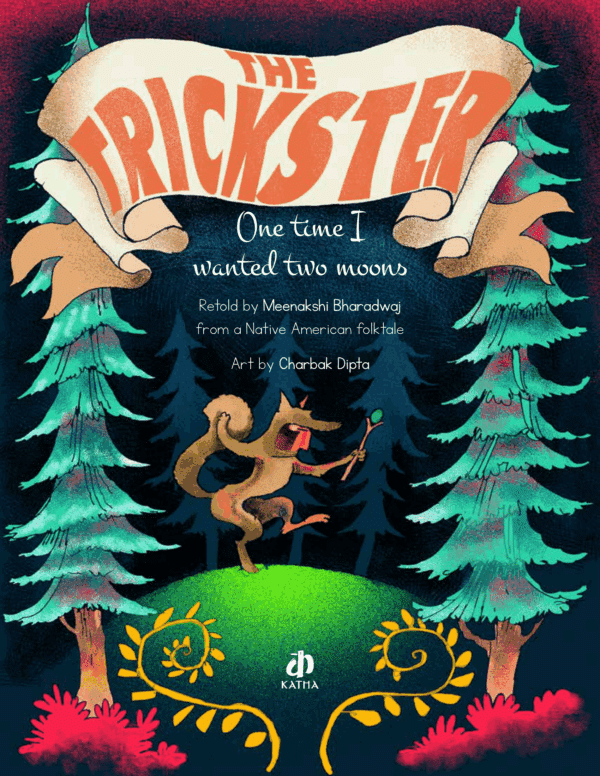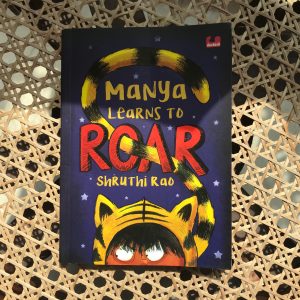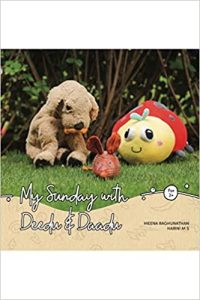The Trickster: One Time I Wanted Two Moons (Katha, 2025) is a tale that lingers, perhaps in the layers of our psyche. A fun folktale for children, at a deceptively simple level, the book then gently draws you in to consider layers of truth.
Retold with quiet resonance by Meenakshi Bharadwaj, and vividly illustrated by Charbak Dipta, this is a retelling of a Native American folktale. At first glance, it reads like a whimsical adventure of a coyote, who wants two moons — so that he can trick villagers into seeing two moons. He magically makes the second moon appear and first tries to trick one man, who runs to the village to spread the news of two moons. But, the man and the villagers, whilst seeing more than one moon, are also aware of the presence of the ‘trickster’.
Do they fool the trickster or does the trickster fool them? This is the play of the story that shimmers with something deeper, older, and archetypal.
The Trickster figure is familiar across cultures, and it makes its entrance not with malice but with a yearning for more, for a certain duality, for the fun of it, something like a little disruptive energy. Bharadwaj captures this paradox beautifully: the Trickster as both foolish and wise, full of mischief and perhaps carrying a hint of innocence as well.
While the book is marketed for younger readers, adults — particularly those inclined toward symbolic thinking — will find much to chew on. In Jungian terms, the Trickster is not just a character but a psychic force; the agent of chaos that stirs stagnant waters and exposes the rigidity of rules. Bharadwaj’s retelling doesn’t spell this out very clearly, because of course the book is a picture book for children, but when I read it do I see a hint of this allusion? Perhaps I see it because I want to? Or perhaps, is there a “Trickster” at play here?




